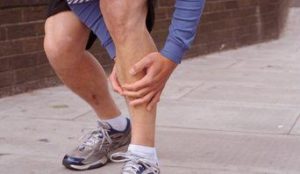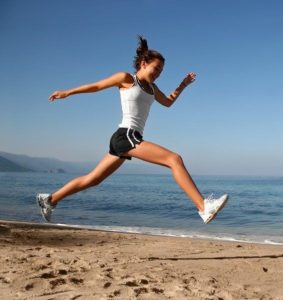
by Brad Minus | Nov 27, 2013 |
I believe I have started to write this post on injuries, a number of times, trying to be as clear as possible without seeming conceited or that the information I am giving is absolute. That being said I am giving this disclaimer:
The information in this post comes from experience, my personal research and conversations with Physical Therapists, Bio-mechanical experts, Orthopedists and other athletes. I am not a physician or medical expert, so please take this information as opinion based on cognitive research. Also, there is an exception to every rule and another explanation. I do welcome comments that give constructive criticism, but I make mention to this disclaimer first.
What causes injuries?
You might be surprised to hear that there are only two reasons runners (and other athletes) get injured; accidents and imbalance. Accidents are obvious right? For example; rolling the  ankle stepping off a curb, falling, being hit by a bicycle, etc.
ankle stepping off a curb, falling, being hit by a bicycle, etc.
Imbalance will cover the why’s of the rest of the injuries. The human body is designed for every system to work in synergy, therefore when one piece of the puzzle is not operating a full capacity or efficiently, the other systems have to do more work. This is when the imbalance occurs.
When talking with Physical Therapists and Bio-mechanical experts I was shocked at some of the stories I heard. One story I heard was of a football player who was training, running 100s up and down the field carrying a ball. He had extended his shoulder just barely beyond its usual range of motion, and he ended up with severe pain in his opposite quadricep. “What?!!!!” was my initial reaction, however, I was then educated on the connective tissue (ligaments, tendons etc) which can be traced from the very top of our skull, down through our torso and into the extremities. Everything is connected.
Common Injuries

As another example, one of the most popular injuries for newer runners are the dreaded shin splints or medial tibial stress syndrome (MTSS).
Scientifically it is caused tiny micro tears of the fibers connecting the medial soleus fascia through the periosteum of the tibia where it inserts into the bone. Due to the soleus becoming so week that the constriction starts to bow the tibia. In more layman’s terms, the calf becomes so tight due to weakness and inflexibility, that the connective tissue pulls on the bone. (There is some physiological proof and complaints that more runners are getting shin splints and other injuries due to training in calf sleeves and other compression gear, but I will address this in another post.)
This same weakness, fatigue in the calf muscle can also cause another popular injury. Plantar Faciitis. In this case, instead of the connective tissue weakening through to the soleus is pulls on the plantar fascia causing inflammation which can be debilitating.
An injury can be traced either by the athlete themselves or by a professional to a point of imbalance. Most likely somewhere within the full spectrum of the athletes, body, behavior and, do I dear say it, attitude.
How can injuries be prevented?
As a coach and trainer, my first rule, and one that I increasingly live by, is “Do no harm.” Therefore, I am always asking questions starting at a high level and continuing to get more specific. (The examples below are catered more toward running, but can be used in any sport.)
Planning
- Is the effort balanced through each week? (So, no high intensity days back to back)
- Is the volume balanced? (No consecutive high mileage days)
- Is the duration balancing?
- Is there enough recovery?
- Does the periodization allow for peaking at race time, but still allow for enough rest prior to the race?
Strength Training
- At what time in the plan does strength training make sense?
- This can be critical. If the strength routines are not designed to not only strengthen the muscles used for the sport, but strengthen them for the way they will be utilized, it can be detrimental. For example: Heavy squats for a runner. What is targeted? The glutes, and hamstrings. How are they being utilized in a downward and upward motion causing the hamstrings and glutes to gain size in that direction. How do we run? In a forward motion right? Well if there is more pull on the glutes in the sitting position gravity will work to pull backwards. That is working against what we want. It would be better to do air squats or light dumbbell squats where the motion is more forward which would be utilizing the muscle the right way.
- Are the exercises within the workouts specifically designed to strengthen a muscle, or group of muscles, in the same way they are utilized within the sport?
- Are the intensities, duration, reps and sets balanceing within the weeks of that period in the plan?
Form and Technique
- Does the plan take into account work on form and technique either as a full workout or within workouts?
- Is it enough? Or Is it too much? (This is obviously specific to the athlete)
- When looking at the athlete do they look symmetrical? Are there any imbalances to the eye? (over-pronator, supinator, flares,)
- Is the athlete in the right shoes and equipment?
Nutrition
- Is the nutrition in strategic balance, fueling the muscles properly for the sport?
- Is there enough calories? Are there too many calories? Are the calories nutritional dense?
Mindset
- Is this the right time in the athletes life for this race?
- Do they have a support system?
- is the plan fitting in the athletes life with minimal impact, or is there planning for the impacts ahead of time?
- What kind of attitude does the athlete have towards training and does the plan fit that attitude? Or should there be an adjusting of attitude?
There are definitely more questions I ask, however, I think these examples give a good idea of why balance is so important.
The term “overuse” is being used quite a bit, but what is it? It’s an imbalance of planning or lacking thereof. Tracing Injuries is completed from the highest level which would be the training plan, all the way down to the balance of strength and flexibility within the connective tissue of the body. Personally, I think it is amazing that on one hand our bodies can endure a lot, but if we don’t notice those little weaknesses, it will create an imbalance that could cause and injury that may or may not keep us from doing what we love most.

Balanced Plan -> Period -> Weeks -> Workouts -> Balanced Form -> Body -> Mind
Carpe Viam!

by Brad Minus | Jul 30, 2013 |
It has been a while since I have been able to put together a Tribute Tuesday post and this weeks tribute is someone I am truly honored and excited to write about. Katrina Pilkington, known by most people as Kat, has a heart that is rare by most standards. While she enjoys being healthy and partaking in fitness challenges and goals, she always…and I mean always, finds ways to help others reach their goals in the process.
To tell you the truth I have no idea how she does it. Katrina Pilkington is a woman who a few years ago decided to shed over 40 pounds for herself (see her story) and in doing so created a new energetic voice in the community and the blogosphere directed totally at those who want to become more healthy, more fit, and share ideas on how to go about it.
With only starting to run seriously just a couple of years ago, Katrina Pilkington, over the past nine months has completed her own challenge of 6 half-marathons in 6 months, attained her Certified Personal Trainer, has blogged about some new idea, product, person or technique every single day, holds a full-time job and is very active with her newlywed husband. Sarah Jessica Parker in “I Don’t Know How She Does It” has nothing on Mrs. Katrina Pilkington. She is truly amazing.

She doesn’t know it yet (well, she will now), but she is an inspiration to me. If it wasn’t for her example, Inner Fire probably would not be around today. Kat showed me it was possible to get a message out that would inspire, motivate and be fun to write. She also set an example on that there are plenty of topics out there to be expressed each and every day.
You don’t have to take my word for it, take hers in my interview below:
Interview:
Name: Katrina Pilkington or Kat
 Birthdate/Sign: December 10 – Sagittarius all the way
Birthdate/Sign: December 10 – Sagittarius all the way
Place of Birth: Clearwater, Florida
Place growing up: Clearwater, Florida
High School: Pinellas Park High
High School sports: None – I had my head in the books
College: Tampa Technical Institute
College Sports: Nope
Other Sports: Never did any until I grew up!
I have linked to your “my story page” above so everyone can read your amazing story, but can you tell us what was the major turning point that started your fitness journey?
I’d struggled with binge dieting off and on and depended on quick fixes only to regain the weight back each time I stopped. I decided once and for all that I wanted to be the healthiest I’ve ever been and the fittest I’ve ever been once I turned 30 and have since worked to help others learn to live a healthy life the right way through the right methods.
If you could give me one adjective to describe the feeling you get when you are working out what would it be?
Powerful
When and why did you start running?
I started running and did 5ks and smaller races back in 2007.
What is one thing you love most about competing in road races?
I love the sense of accomplishment. I’ve done races and distances I never thought my body could take me through and hadn’t planned on it. Having asthma that kept me from playing sports when I was younger definitely motivates me to keep going and seeing how capable I really am.
Following your twitter, facebook, and blog, we know that you just past the NASM-CPT exam. What do you plan to do with it?
I wanted to learn about fitness in more depth on my own and to teach others what I’d learned through my blog and in person. I’d love to start teaching boot camps and learn more skills to do more with others.

Kat with husband Gary, and Jaeden
We all have those days when we just do not feel like training. What do you do to get past that feeling and get on with your workout?
I am super structured and as long as I have a training plan in my face, I get up. Having to turn off the alarm and sit up and go. Only one rest day a week is required for me and the only other time I rest is if I’m sick. My workout will get me through the rest of the day better than anything else could.
What would you say is your greatest obstacle you ever overcame?
Running 6 half marathons in 6 months all around 2:10 while working to increase my lung capacity through having allergen-induced asthma (went from 74% – the lungs of someone in their 60s or 70s – to now 88%)
What is your greatest victory?
Those races – and now training for my first full marathon!
What are your favorite quotes?
“Love yourself and be awake, today, tomorrow, always”
~ Buddha (tattooed on my left, upper, inner arm as a daily reminder)

Coach Brad, Kat & Gary Pilkington
Carpe Viam!!!
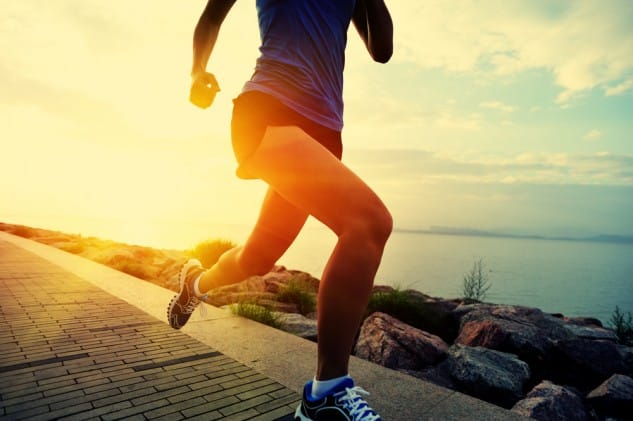

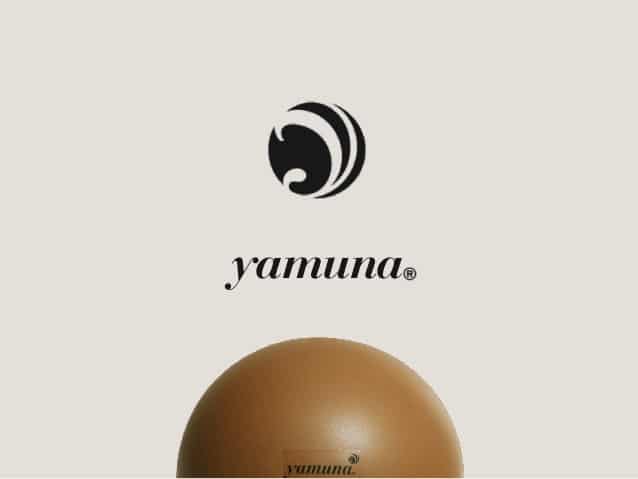



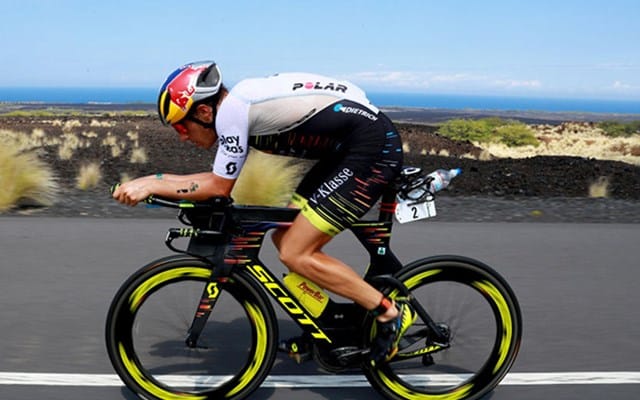
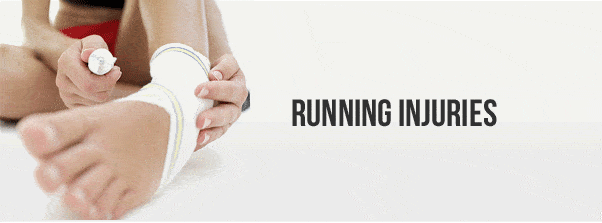
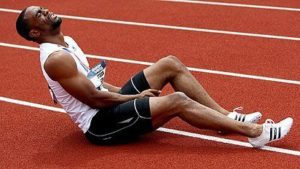 ankle stepping off a curb, falling, being hit by a bicycle, etc.
ankle stepping off a curb, falling, being hit by a bicycle, etc.